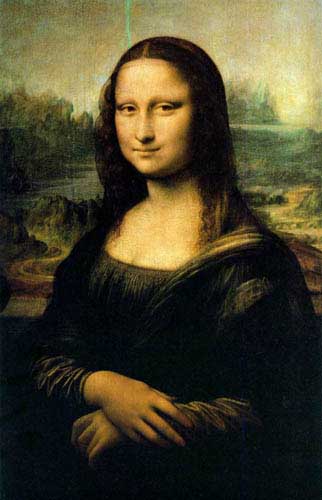UNDERSTANDING SENESCENCE - THE SCIENCE OF AGING
For most people, aging or senescence is taken for granted to be an inevitable process. Much as we resent growing old and put in much effort fighting the ravages of aging by exercise, healthy living, cosmetics or aesthetic surgery and procedures; we can't deny that we all age. It is the ultimate social leveller.
Though commonly thought to be natural, from the scientific viewpoint at least, aging is quite a mystery and its investigation had been exercising the best scientific brains for centuries. Now, we do know a few things about it.
Types of aging
First, we have to discriminate between the different types of aging:
1.
Cellular senescence
If you put some somatic cells in a petri dish with their required nutrients, they will undergo about 50 cell divisions and then stop. If there is DNA damage or breaks during replication, divisions may stop even earlier (Hayflick phenomenon). This loss of ability to divide constitute cellular aging. Cell divisions are limited by at least 2 factors. First, the ends of chromosomes, called telomeres, which are needed for maintaining chromosomal integrity shorten successively with each cell cycle. It is this shortening of the telomeres that contributes to aging by limiting the number of cell divisions; and is associated with increased mortality from heart disease, infectious diseases, dementia and cancers. Secondly, limiting the number of cell divisions is an in-built mechanism to prevent the onset of cancer since unlimited divisions will inevitably lead to an accumulation of DNA mutations.
2.
Organismal senescence
Organismal aging refers to the aging of the whole organism. This is marked by a progressive deterioration of physiological and homeostatic functions, a decreased ability to respond to stress, a lowered efficiency of DNA repair, an imbalance between antioxidant enzyme secretion and free-radical production, an increased vulnerability to infections and an increased risk of age-related diseases.
3.
Brain senescence
Brain aging is marked by poorer
cognitive abilities, poorer memory, more aggression and anxiety and the higher risks of developing Alzheimer's disease and Parkinsons's disease. Recent research suggests brain aging is related to a reduction of the activity of a protein called CREB1 (cAMP response element-binding 1) which plays a crucial role in regulating important brain functions.
The role of cell senescence in organismal senescence and and the co-relations between organismal and brain senescence are at present unclear.
Determinants of human life-span
A.
Genetic determinants - 25%
1. Genes that regulate nuclear integrity, DNA repair and the production of proteins.
2. Genes that regulate telomere length.
3. Genes that affect stress resistance and the control of oxidative damage by reactive oxygen species.
4. Genes in mitochondrial DNA. Under attack by reactive oxygen species, mitochondrial DNA
mutates about 10 to 20 times faster than nuclear DNA. The resultant damage or loss of
mitochondrial DNA reduces the production of ATP and leads to
cell death and aging.
5. Genes that regulate gene expression through the sirtuin pathways. Sirtuins are enzymes called deacetylases thought to mediate the lifespan-increasing effect of caloric restriction. Caloric restriction is known to retard age-related changes in skin, bone, muscle and blood vessels; and reduce the incidence of tumors.
6. Genes that regulate signaling by insulin and insulin-like growth
factor-1 (IGF-1)- like molecules. Reduced insulin signalling is associated with lower risk of diabetes mellitus, reduced oxidative stress, increased tumor suppression and prolonged lifespan . The association of small body size within a species with
increased longevity may also exert its effect through this pathway.
7. Genes involved in chronic low-level inflammation. Chronic inflammation is associated with several
age-related diseases, including atherosclerosis, cancer, and type 2
diabetes mellitus.
B.
Non-genetic determinants -75%
1. Environmental exposures.
2. Accidents.
3. Injuries.
4. Chance events.
How to decrease aging and increase your lifespan?
A.
Stop damage to your health
1. Stop smoking, drinking and abusing drugs.
2. Change to a low salt, low sugar and low fat diet.
3. Reduce weight and maintain your Body Mass Index at between 18.5 to 23.0 (for Asians).
4. Exercise by brisk walking, cycling or swimming for 30 minutes 5 times a week.
5. Reduce stress.
6. Sleep adequately (between 6 to 8 hours nightly).
7. Adopt a positive attitude/outlook in life.
B.
Practise Caloric Restriction
A calorie restriction diet reduces your intake of calories by 20 to 40% from your usual intake while ensuring that all the necessary nutrients and vitamins are provided. This probably constitutes the only presently available method that can positively extend your life span. It had been proven in every species so far tested, including worms, spiders, rodents, dogs, cows and monkeys. As stated above, recent research had shown that caloric restriction dramatically increases the action of CREB1 protein in the brain. In turn, CREB1 activates many genes linked to longevity and to the proper functioning of the brain by switching on the sirtuins.



